Are you a food lover? Do you want to taste different kinds of Chinese food? Do you want to learn how to cook Chinese food? If your answers are yes, this 10-days authentic China food tour is perfect for you. During this trip, besides enjoying the beautiful scenery, you will also have opportunities to taste various Chinese foods. In Shanghai, you will go to local food streets to taste Shanghai food, for example, Shengjian (fried bun). In Chengdu, you will not only have opportunities to taste Chengdu street food, but also can learn the culture of Sichuan cuisine and witness the process of making Sichuan cuisine. In Guangzhou, you will have a chance to choose a local snack bar by yourself to taste dim-sum. So, when you finish your tour, you will have a real and perfect experience of Chinese food and even the history and culture behind it. Please do not wait to choose this tour itinerary and experience a different gastronomy tour.

Today, you will arrive in Shanghai. According to your flight information, your guide will welcome and wait for you at the airport with your name sign. After that, you will be transferred to the hotel comfortably.
Located in the Yangtze River Delta, the estuary of the Yangtze River, Shanghai covers 6,340.5 square kilometers and has a permanent population of 24.87 million. In Shanghai, you will experience both the view of a modern metropolis and the features of a historical city. What’s more, you can taste dozens of local delicacies there by yourself upon arrival, including Shengjian (fried bun), Paiguniangao (pork chop with rice cakes), Xiaolongbao (soup dumpling), and so on. All of these symbolize a good start of this gastronomy tour.
 Suzhou
Suzhou Shanghai
Shanghai In the morning, our guide and driver will take you to Suzhou, which will take about 1.5 hours. Suzhou is about 100 kilometers to the west of Shanghai. It covers an area of 8,657.32 square kilometers with a permanent population of 12.75 million. If you like the sweet taste, Suzhou will be the gourmet heaven for you. There are both delicious dishes like Songshu Guiyu (Stewed and Fried Mandarin Fish) and snacks like osmanthus cake. As a food lover, please be sure to have a try.
After breakfast, you will visit Lingering Garden, which is one of the Four Most Famous Gardens of China. It is a large-scale classical private garden in China, covering an area of 23,300 square meters. The whole garden is divided into 4 parts, where you can enjoy different kinds of views. The central part is the core scenic spot of Lingering Garden. In this area, a pool was excavated in the southeast, and artificial hills were piled up in the northwest. And you can totally visit 12 architectural buildings of different sizes there. The eastern part is where the buildings of Lingering Garden mainly lie. In this area, corridors connect the buildings and integrate them with courtyards. And the northern part will show you a charming pastoral scene. In this area, you will feel the simple and natural rustic life. The western part is marked by various artificial hills and forests. Roaming in the garden, you will enter a state of deep relaxation.
In the afternoon, you will go to Shantang Street. Shantang Street was named after Shantang River. In 825, Bai Juyi (a noted poet in China) was the governor of Suzhou. During the process of dredging the watercourse, Shantang River came into existence. The street along the bank of the river was then known as Shantang Street. In there, you can taste various local snacks. For example, osmanthus cake, which is primarily made from white sugar, glutinous rice flour and honey osmanthus. Glutinous rice balls with meat filings also worth trying.
Shantang Street ends at Tiger Hill in the west, which is your last stop today. It is 34.3 meters above sea level and covers an area of 20 hectares. It is composed of Jurassic volcanic magma, and was formed 150 million years ago. The most famous attraction there is the Tiger Hill Tower. It was built in the Song Dynasty (960-1279) and is now a landmark of Suzhou. It has seven floors with a total height of 47.5 meters. Though withstood a lot in history, it is still well preserved. But due to the uneven foundation and inadequate design and structure, the tower has sloped to the northwest since the Ming Dynasty (1368-1644), so it is also known as the “Leaning Tower of Pisa in the Orient”. However, it’s interesting that only the bottom six floors of the tower are oblique, and the top floor is straight. You can carefully observe it by yourself during this trip!
After that, your trip in Suzhou is coming to an end, and you will be transferred back to Shanghai.
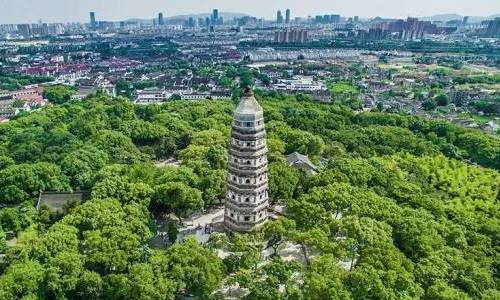

After breakfast, you will visit Jade Buddha Temple. Though located in the bustling downtown area of Shanghai, it is a pure land. Jade Buddha Temple, covering an area of about 8,000 square meters with 299 houses, was built in 1882. The reason why it is famous is that there are two exquisite and unparalleled jade Buddha statues stored in the temple. During the Guangxu period (1875-1908) of the Qing Dynasty (1636-1912), Huigen (a monk of Mount Putuo) went on a pilgrimage. On his way back to the country, he took back five jade Buddhas of different sizes from Burma. When passing Shanghai, he left two of them here in a temple, and this temple was then named Jade Buddha Temple.
Then, our tour guide will lead you to Yu Garden (closed each Monday), which is a major historical and cultural site protected at the national level in China. It was built in the Jiajing period (1522-1566) of the Ming Dynasty and has a history of more than 400 years. There are more than forty ancient buildings with exquisite design and delicate layout in Yu Garden. In addition, many brick carvings, stone carvings, clay sculptures, and wood carvings are scattered in every corner of it. No wonder people who have traveled here say, “It will be your biggest regret to go to Shanghai without visiting Yu Garden”.
After that, you will go to Shanghai Old Street, where you can both enjoy special views and taste local snacks. Shanghai Old Street is divided into the eastern part and the western part. The eastern part has been decorated and remodeled to retain the residential characteristics of the late Qing Dynasty. The houses in the western part imitate the architecture of the Ming Dynasty and the Qing Dynasty, highlighting the folk customs of Shanghai. Besides sightseeing, you can also taste some special local snacks. For example, Shengjian (fried bun). Its filling is made from a mixture of fresh pork and special skin jelly. Its bottom is fried until it becomes golden, and the top is sprinkled with chives and sesame seeds. Paigu Niangao (pork chop with rice cakes) is also worth a try, which not only has the delicious flavor of pork chop, but also the unique texture of rice cakes. Xiaolongbao (soup dumpling), another famous snack of Shanghai, is more delicious and juicier than normal dumplings.
After a hearty lunch, you will go to Shanghai Tower and stand on the viewing platform to overlook the beautiful Shanghai. It is a building integrating business, office, hotel, commerce, entertainment, sightseeing and many other functions. The total height of the building is 632 meters, with 127 floors above ground and 5 floors underground, covering an area of 578,000 square meters. The 118th floor is the observation deck of the Shanghai Tower, surrounded by large transparent glass. The height of this floor is 546 meters, and on this floor, you can overlook Shanghai in all directions. With a high-speed elevator, you can get to this floor in 55 seconds.
Coming out from Shanghai Tower, you will go to the Bund as the next stop. The Bund is one of the attractions that you should never miss. It is about 1.5 kilometers in length. The river, bank, green belts and buildings on the Bund constitute the most distinctive landscape. It faces the Huangpu River (a 113 kilometer-long river flowing through Shanghai) in the east and has dozens of classical buildings of different styles in the west, which are known as Exotic Building Clusters. These buildings, where classicism and modernism coexist, have become a symbol of Shanghai.
After that, you will go to visit Nanjing Road as your last stop today. Nanjing Road is about 1,200 meters long, and there are marble tablets in both the east and west. The Chinese characters of “Nanjing Road” were inscribed on them by President Jiang Zemin (who served from 1989-2002). Nanjing Road includes two of the top ten commercial centers in Shanghai: East Nanjing Road and West Nanjing Road. East Nanjing Road is mainly a street that sells less-expensive goods, while West Nanjing Road is the most luxurious and fashionable commercial area in Shanghai, focusing on high-end goods. What’s more, Nanjing Road is also a foodie's paradise. The shopping malls here have fashionable stores and coffee shops of various brands, as well as many time-honored restaurants.
Stepping out of Nanjing Road, today’s trip is coming to the end. You will be transferred to your hotel by your tour guide and have a good rest.
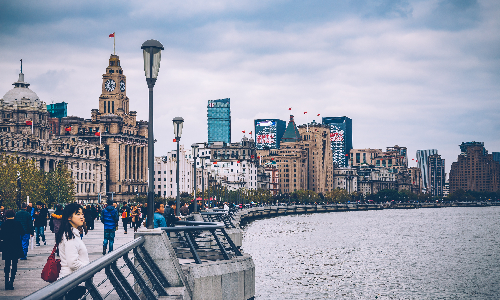
 Guangzhou
Guangzhou Today, after breakfast, you will head southwest towards Zhujiajiao Ancient Town. Zhujiajiao Ancient Town is 48 kilometers from the center of Shanghai, and it takes about an hour to drive there. As the best-preserved ancient water town in Shanghai, it combines the historical features and the charm of water towns at the same time. No wonder it is known as Venice in Shanghai. One of the most famous attractions there is Fangsheng Bridge, the largest and longest stone arch bridge in Shanghai. So how it got this name? In Chinese, its name Fangsheng means set lives free. It is said that for showing the loving-kindness of Buddhism, the monks here always organized activities to release aquatic animals on the first and fifteenth days of the lunar calendar. Therefore, the name Fangsheng Bridge came into existence.
Stepping out of Zhujiajiao Ancient Town, your tour in Shanghai is over. Our tour guide will lead you to the airport. Then you will take the estimated flight HO1037 14:55/17:10 to Guangzhou. As soon as you arrive in Guangzhou, you will find our tour guide, who will take you to the hotel. Now, you will have an overview of Guangzhou and your food tour there. Guangzhou is the capital city of Guangdong Province, covering an area of 7,434 square kilometers. In there, you can taste various food with local characteristics, sampan congee (a type of congee, traditionally topped with seafood), steamed vermicelli roll, fish-skin salad and double-skin milk custard for example. We are sure that this trip in Guangzhou will be beyond your expectation.
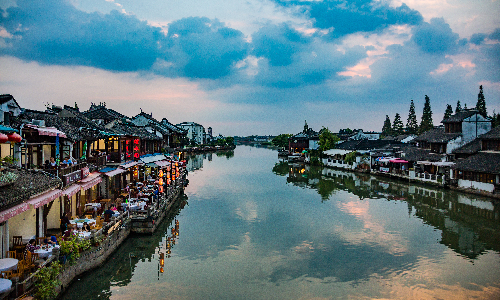
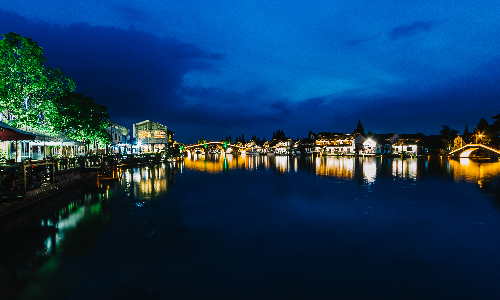
Today, your trip in Guangzhou will begin. After breakfast, you will go to visit Chen Family Ancestral Temple. It was jointly funded and built by the Chen clans in 72 counties of Guangdong Province of the Qing Dynasty in 1888. It is a magnificent and well-preserved ancestral temple that covers an area of 15,000 square meters. Its main function was to provide temporary accommodation for the descendants of the Chen clan who participated in the imperial examinations, tax payments, litigation and other matters. So, it actually functioned as a simple hotel at that time. With 9 halls, 6 courtyards and 10 wing rooms and corridors, it shows the characteristics of traditional Chinese buildings.
After visiting Chen Family Ancestral Temple, you will be transferred to Shangxiajiu Pedestrian Street, which is a gourmet paradise that you should never miss on a foodie tour. With a length of 1,237 meters, there are 238 various commercial shops and thousands of merchants. You will have a chance to taste many types of local specialties here. In this street, you can taste Jiangzhuangnai (ginger milk pudding). It is made from ginger juice and milk, so it tastes a little spicy and has a unique flavor. You can try it as a dessert. Besides, you can also try to taste Changfen (steamed vermicelli roll). There are salty and sweet types of steamed vermicelli rolls. The fillings of the salty ones are mainly pork, beef, shrimp, etc., while the fillings of the sweet ones are mainly fruits and vegetables. You can choose according to your own liking.
Then, you will go to Yuexiu Park as your first stop in the afternoon. Yuexiu Park is the largest green space in the central area of Guangzhou. The natural environment in the park is nice and the plant species in the park are diverse. In addition, more than 20 foreign heads of state such as Nixon, Sihanouk and Kim Il Sung have visited Yuexiu Park. So, you can see that Yuexiu Park is an important itinerary that tourists should not miss in Guangzhou.
Today, your last stop is Canton Tower. It is a towering city symbol, and is a landmark that local people are proud of. What’s more, its unique architecture fully demonstrates the fusion of modern technology and fashion art, which makes it an iconic building of the time in Guangzhou and even the world. As it is 600 meters high in total, you can overlook the city here. Besides, if you like exciting amusement facilities, you can experience sky drop and bubble tram here. These are not included in our itinerary, and you can buy your own tickets on site if interested.
Then, your today’s trip in Guangzhou is coming to the end, and you will be driven to your hotel for a good rest.
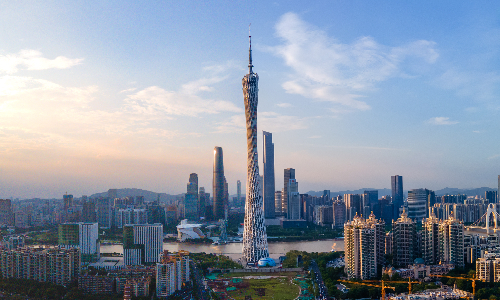
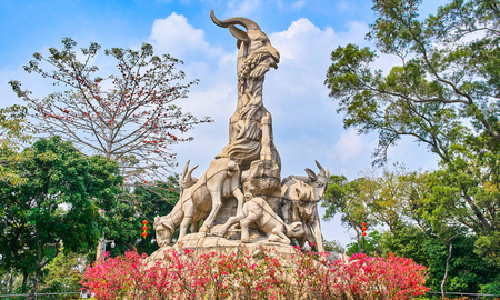
 Chengdu
Chengdu This morning will be your own free time to explore the city.Your breakfast at hotel is included as previous days. However, if you are interested in what the locals eat in the morning, you can find a local restaurant to taste dim-sum, the most popular type of breakfast for locals. For local people, eating dim-sum is a kind of custom. Together with tea, they usually order two or more types of dim-sum. Here are some famous types of dim-sum that you can have a try. Chashaobao (steamed barbecue pork bun), for example, is one of the representative dim-sum of Guangzhou. Its filling is small pieces of barbecued pork with oyster sauce and other seasonings. You can also eat egg tart, which is a western-style pie made with egg and cream. It tastes sweet, soft and delicious.
At about noon, you will be driven to the airport and take the estimated flight 3U8732 14:15/16:40 to Chengdu. Chengdu is the provincial capital of Sichuan. Covering an area of 14,335 square kilometers, it has about 21 million permanent residents. What’s more, it is one of the ten historic capitals and is the paradise for food lovers. Sichuan cuisine, which you can taste in Chengdu, is one of the four major types of cuisines in China. Typical dishes of it include Hot Pot, Liangbanji (cold chicken in a spicy sauce), Huiguorou (twice-cooked pork) and so on, all of these are worth tasting.
Today, you will formally begin your trip in Chengdu. After breakfast, you will go to Chengdu Research Base of Giant Panda Breeding to visit lovely pandas. Chengdu Research Base of Giant Panda Breeding is about 15 kilometers northward from the center of Chengdu, which takes about half an hour on the way. It is a well-known conservation and research institute for rare and endangered wildlife in China and even the world. And among all of those endangered wildlife, pandas are the most popular, as you can tell from the base’s name. Your guide will take you to where the pandas live, and you will see the lovely creatures in their daily lives up close. You will also visit Sunshine Delivery House and Moonlight Delivery House for Giant Pandas. Located at the core area of the base, the two delivery houses are where giant pandas give birth and panda cubs live. If lucky, you can see the newborns!
In the afternoon, Chuancais Museum will be your first stop. It is the world’s only museum that makes cuisine culture as its theme. Sichuan’s local culture, including its cuisine, wine, tea, Sichuanese opera and architecture is shown in this museum. Covering an area of about 6.6 acres, it has more than 6,000 pieces of collections. Among them, you will see tableware that local people used thousands of years ago and books about Sichuan cuisine. Besides, there are live demonstrations of the making of Sichuan cuisine. And even more interesting, you can taste the food made on-site or participate in the process of making them. It is the perfect place for visitors to experience the culture of Sichuan cuisine.
Next, you will go to People’s Park. With an area of 112,639 square meters, it’s a comprehensive park that integrates culture and recreation. Walking in the park, you can feel the leisure life of Chengdu locals and enjoy a slow pace of life. The most famous place in the park is Heming Tea House. With bamboo chairs and low tables, it still keeps the style it was nearly 100 years ago. For most Chengdu locals, tea is indispensable. If you want to blend in the locals, you can try to sit in Heming Tea House and order a pot of tea to experience Chengdu’s tea culture.
Today, Jinli Street will be your last stop, which was selected as one of the world’s most beautiful streets by CNN. It’s an ancient commercial street, whose history can date back to the Qin and Han Dynasties (221BC-220AD). The layout of Jinli Street is rigorous and orderly. With a length of 550 meters, there are local catering and snack areas, bar areas, and handicraft areas, which fully demonstrate the folk customs of Sichuan. What’s more, it’s a great place for foodies! You can taste some local snacks there, for example, Sandapao and Tangyou Guozi. Sweet and delicious, Sandapao is a famous local snack, which is mainly made of sticky rice. The other one, Tangyou Guozi, is also mainly made of sticky rice, and along with brown sugar and sesame. If you are interested in sweet things, you can have a try.
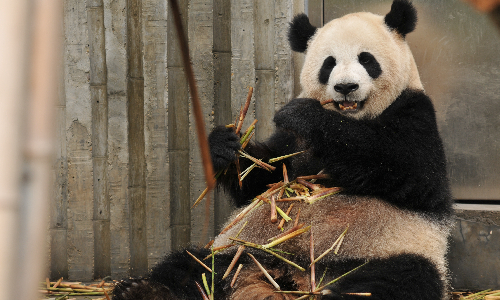

 Beijing
Beijing Today, you will leave Chengdu for Beijing. You will be driven to the airport and then take the estimated flight CA4195 09:30/12:30. And our tour guide will wait for you at the airport. As the capital of China, Beijing is 16,410 square kilometers and has a permanent population of about 21,893,095. In Beijing, you can taste Peking duck, traditional Beijing noodles, sugar-coated haws and so on.
In the afternoon, you will formally begin your tour in Beijing. You will go to visit hutongs near Shicahhai. Hutong is a type of special narrow street in Beijing. Shichahai is a historical and cultural tourist area and protection zone in Beijing. And it is adjacent to the central axis of Beijing. There are numerous hutongs in this area that you can visit, Yaer Hutong, Dajinsi Hutong and Sanbulao Hutong for example. To bring you a different and special experience, we will arrange rickshaws for you. Besides taking a rickshaw to experience the old type of transportation, your guide will take you to one of the local families that live in the courtyards in the hutongs. You will have a chance to see how the locals are living their daily lives.
After that, you will go to Summer Palace. Located in the western suburbs of Beijing, 15 kilometers away from the center of the city, it takes about 30 minutes to drive there. It was an imperial garden of the Qing Dynasty, covering an area of about 290 hectares. It’s the best-preserved imperial garden, and is known as the museum of imperial gardens for its numerous cultural relics. There is a bronze ox in the Summer Palace. It is the most exquisite ancient bronze ox that is still in existence in China. Its modeling adopts realistic techniques, which makes it life-like . The bronze ox lies on a stone seat, its head slightly tilts to the right, and its eyes are looking at Kunming Lake (a large lake inside the Summer Palace). Come and see it with your own eyes!
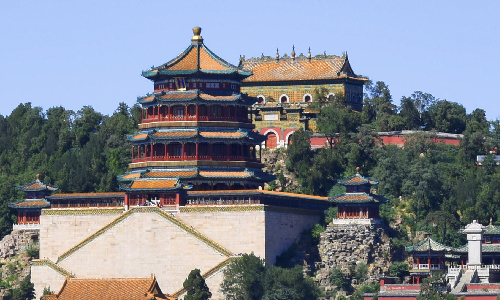
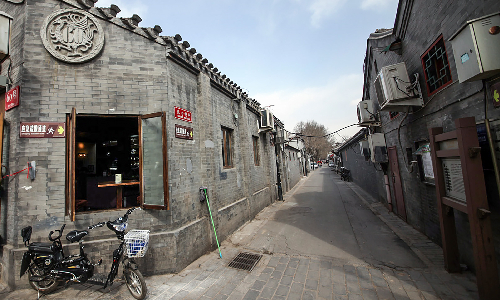
After breakfast, our driver will drive you to Tian’anmen Square. Tian’anmen Square is located on the east of Chang’an Avenue, starting from Tian’anmen Gate Tower in the north, Zhengyangmen in the south, the National Museum of China in the east, and the Great Hall of the People in the west. It is 880 meters long from north to south and 500 meters wide from east to west, making it the largest city square in the world. The Monument to the People’s Heroes is located in the center of Tian’anmen Square. It was completed on April 22, 1958. It is a monument built by the government of China to commemorate the revolutionary martyrs in modern China. The monument is 37.94 meters high, and the front of the stele is engraved with the characters that means“the people’s heroes will be forever remembered”. These characters were inscribed by Chairman Mao Zedong on June 9, 1955.
Your next stop is the Forbidden City (closed each Monday). Located in the center of Beijing’s central axis, the Forbidden City was the imperial palace of the Ming and Qing Dynasties in China. It covers an area of about 720,000 square meters. There is an interesting spot in it, the Hall of Mental Cultivation. It was built during the Jiajing period (1522-1566) of the Ming Dynasty. During the two hundred years from Yongzheng period (1723-1736) to the end of the Qing Dynasty, the emperors used to live and carry out daily activities here, including handling government affairs. In a side hall on its west, you will see the place that Empress Dowager Cixi reigned behind a curtain when emperor Guangxu was young. By reigning behind a curtain, Cixi governed China for 48 years.
Then, your tour guide will take you to Jingshan Park. Located on the central axis of Beijing City, it covers an area of 23 hectares. Jingshan Mountain in the park is 42.6 meters high and 88.35 meters above sea level. It was the highest point in ancient Beijing. Standing on the top of the mountain, you can have a panoramic view of the magnificent Forbidden City and the modern Beijing city.
After lunch, we will head toward the north to Mutianyu Great Wall. It’s about 72 kilometers away from the center of Beijing, which takes about one hour and thirty minutes. Mutianyu Great Wall is one of the most complete and representative parts of the existing Great Wall. What’s more, it has its own character: its watchtowers are very close to each other. On average, there is a watchtower in every 100 meters. What’s more, to bring you a more interesting experience, we will arrange chairlifts for you when you go up and arrange toboggan (under 60 years old) for you when you go down.
After visiting, our driver will drive you back downtown. On your way back, please pay attention to the buildings on the roadside, because you will pass by Birds’ Nest and Water Cube. They are both representative buildings of the 2008 Beijing Olympic Games.
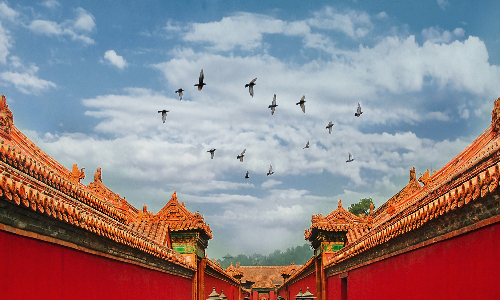
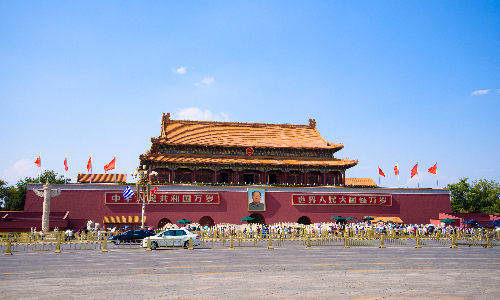
Now, your 10-days trip is over. According to your boarding time, your tour guide and driver will escort you to the airport.
| City | Five Star hotel list | Four Star hotel list |
|---|---|---|
| Shanghai | Ocean Hotel Shanghai | Courtyard by Marriott Shanghai Central |
| Suzhou | Grand Trustel Aster Hotel Suzhou | Suzhou Jasmine Hotel |
| Guangzhou | Baiyun Hotel | Hotel Landmark Canton Guangzhou |
| Chengdu | Sofitel Chengdu Taihe | Holiday Inn Express Chengdu Jinniu |
| Beijing | Sunworld Dynasty Hotel Beijing Wangfujing | Sunworld Hotel Wangfujing |
 |
![]() About your child or infant, please contact us for a discounted price.
About your child or infant, please contact us for a discounted price.



We started with a few days in Beijing & ended in Shanghai, from where we visited the Forbidden City and Great Wall. In between we visited Terra Cotta Warriors Museum, Panda Base, Shanghai Disneyland.

We had a wonderful holiday in China which will remain long in the memory. China is a breathtakingly beautiful country full of splendid temples and palaces, mountains and rivers, peaceful rural scenes and bustling shopping streets.
 QUICK ENQUIRY
QUICK ENQUIRY